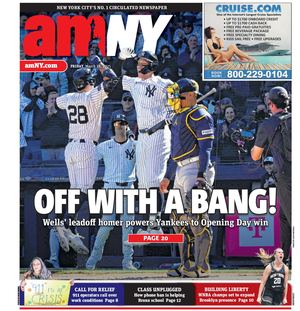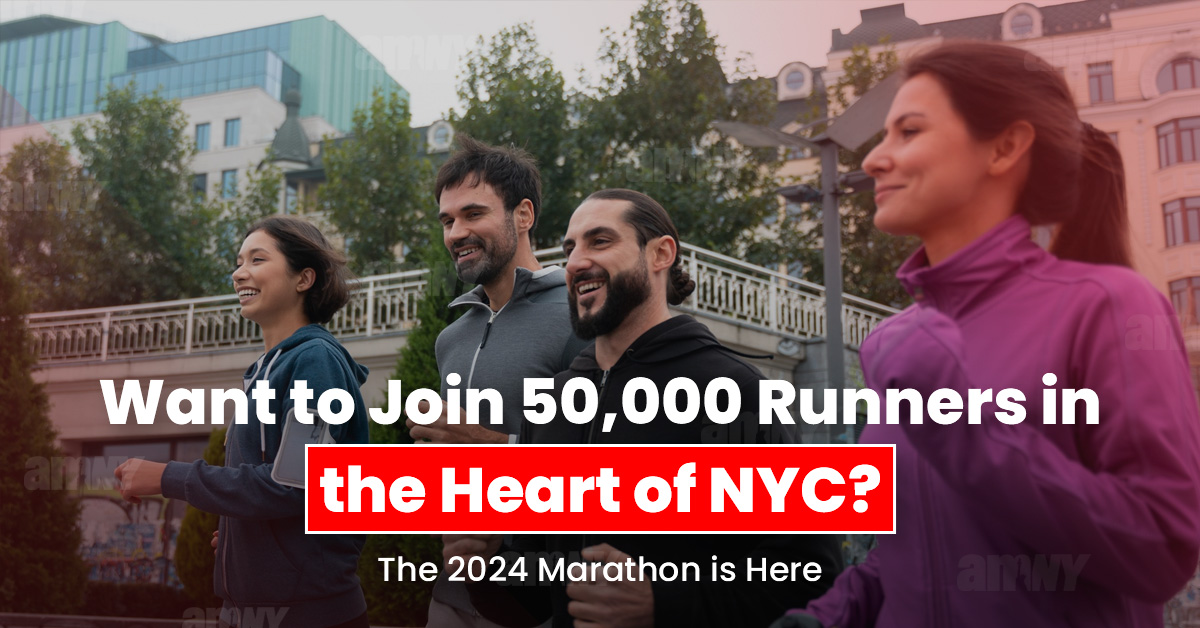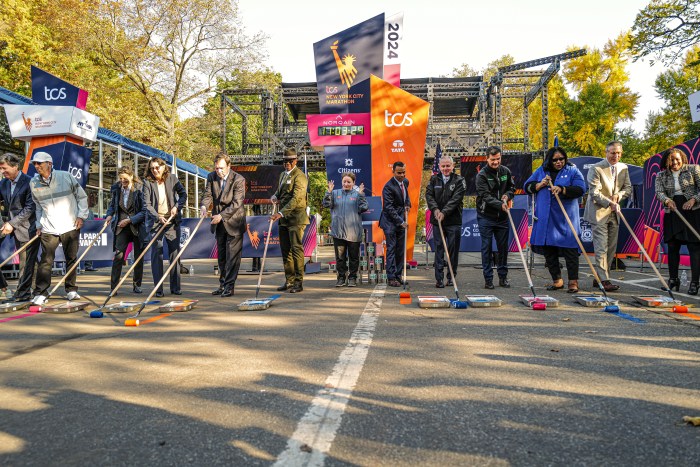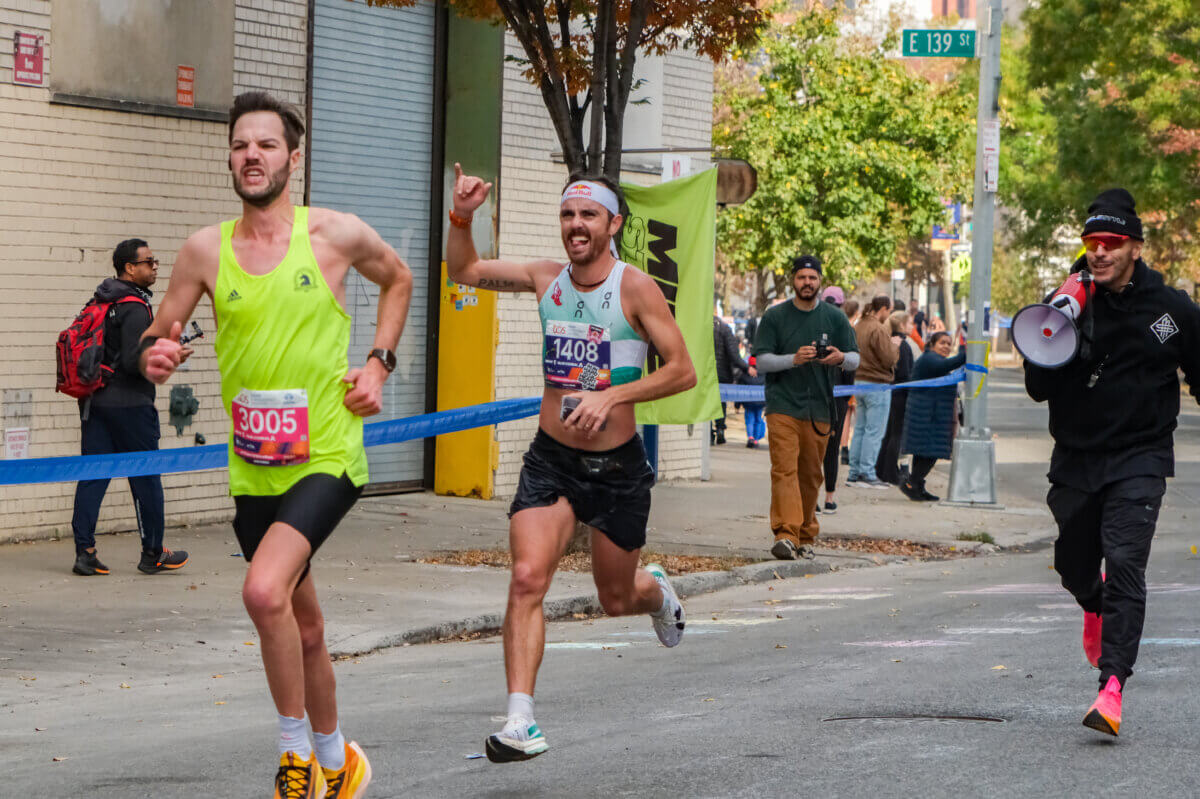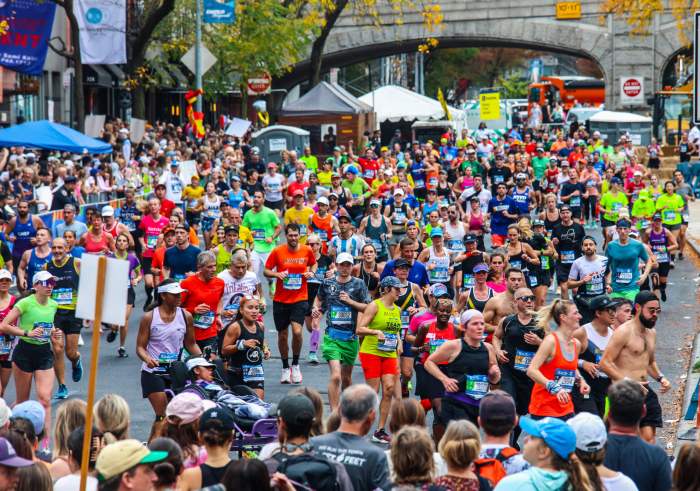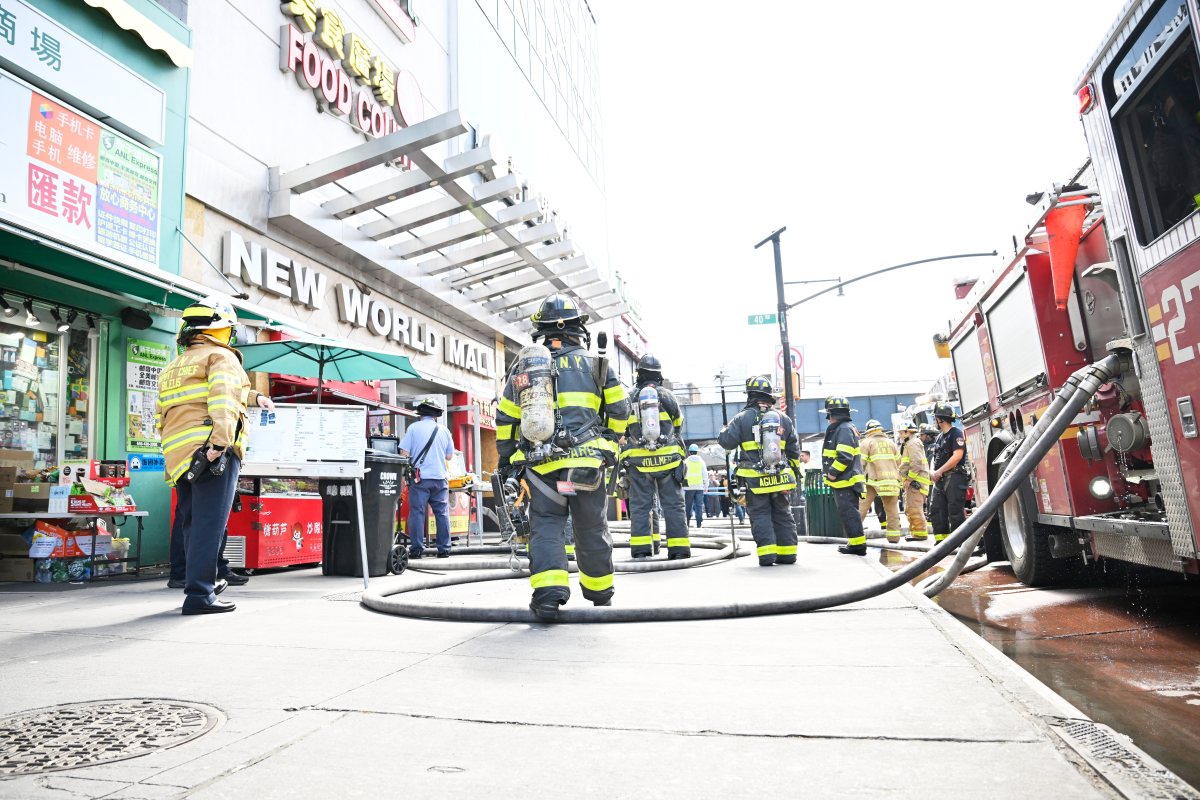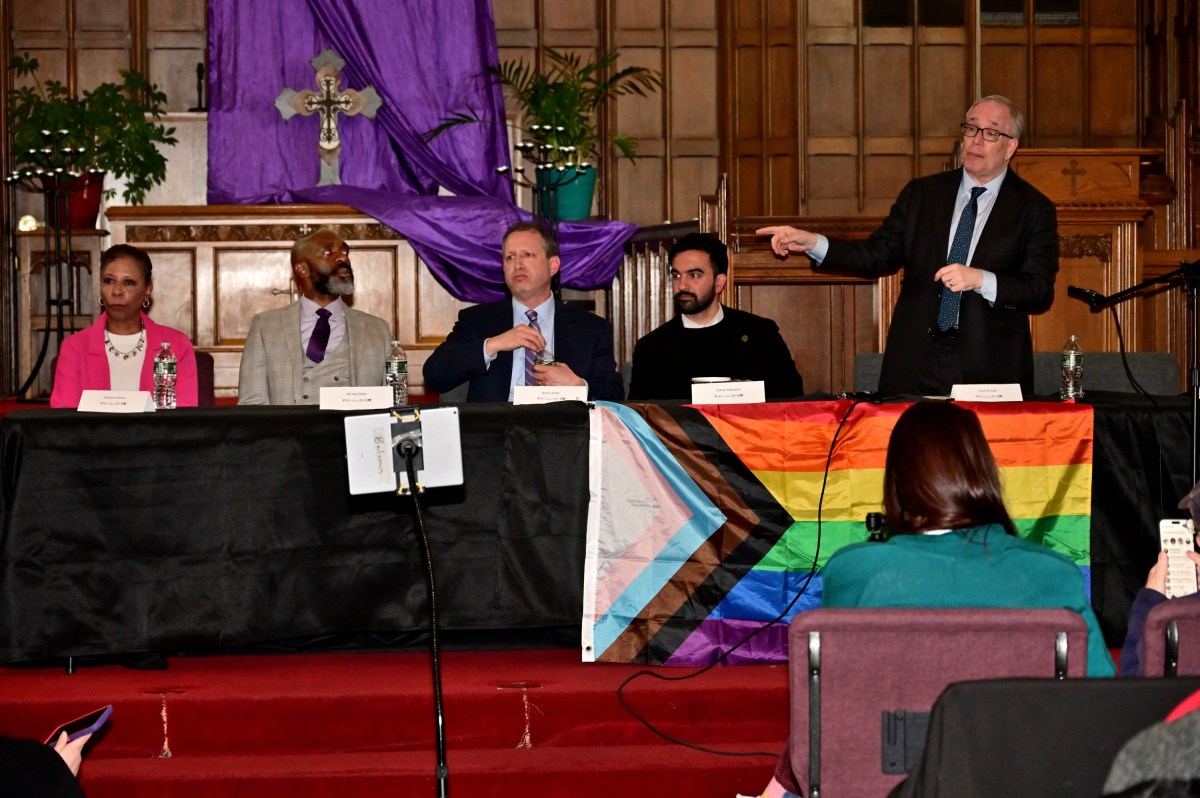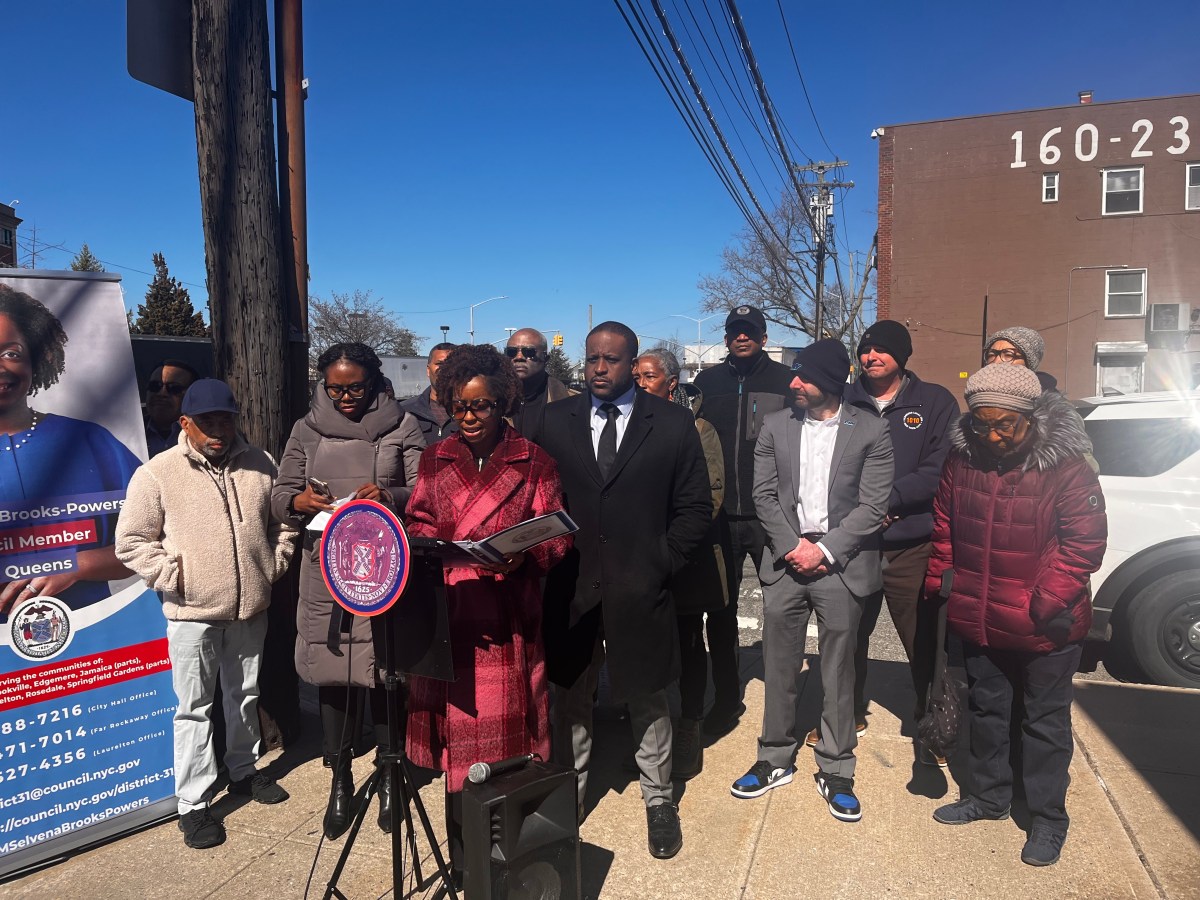I’ve always thought of a marathon as a really fast parade. And since nobody does parades like New York, it makes perfect sense that the New York City Marathon stands as the world’s most electrifying running event. This Sunday, I’ll watch a river of 50,000 runners flow through our streets — every shape, size, age, and story imaginable, streaming in from nearly 150 countries. It’s pure New York: grit, heart, and ambition pounding the pavement mile after mile. Plus, we’ve got two million spectators lining the route to cheer them on — just as diverse as our runners, but definitely breaking less of a sweat.
It Started with a Dollar. The Marathon’s History
The New York City Marathon’s story began on September 13, 1970, when 127 runners paid $1 each to run several loops around Central Park, organized by Fred Lebow and Vince Chiappetta. Only 55 finished. Fast forward to today, and it has grown into a global spectacle — where it costs about $400 to enter. The pivotal moment came in 1976 when the marathon expanded to cover all five boroughs, transforming it from a local event into a citywide celebration of human endurance.
Its ancient origin dates back to Battle of Marathon between Greeks and Persians, when Pheidippides, a Greek messenger, ran 25 miles from Marathon to Athens to deliver news of the Greek victory, clearly a time before passenger pigeons. As he completed the trek, Pheidippides collapsed and uttered the famous words, “Rejoice, we conquer!”
Running Through the Big Apple: The Marathon Course
The New York City Marathon course is a grueling yet breathtaking 26.2-mile tour of the Big Apple. Here’s a breakdown of the journey:
- Staten Island: The race kicks off at the foot of the Verrazzano-Narrows Bridge.
- Brooklyn: Runners cross the bridge and spend the next 11 miles traversing Brooklyn’s diverse neighborhoods.
- Queens: A quick run through Queens leads to the halfway point.
- Manhattan: Runners cross the Queensboro Bridge into Manhattan, greeted by the famous wall of sound on First Avenue.
- The Bronx: A brief sojourn into the Bronx marks the final borough change.
- Back to Manhattan: The final stretch takes runners down Fifth Avenue and into Central Park for the iconic finish.
Iconic Landmarks and Aromatic Neighborhoods
Along the way, runners pass landmarks, from the Brooklyn Academy of Music to the Queensboro Bridge and New York Harbor. The diverse neighborhoods create a vibrant, supportive atmosphere — along with the aroma of cuisine. Pizza and garlic in Bay Ridge, shawarma on Atlantic Avenue, jerk chicken in Crown Heights, pierogies in Greenpoint — and that’s just Brooklyn!
Who Runs the New York City Marathon?
The Marathon field is as diverse as the city itself. In 2023, the event saw 51,402 finishers from 148 countries. Elite athletes chase records and glory (and a $100,00 first place prize), while thousands of amateur runners fulfill personal goals.
The oldest runner is 89 years old, the youngest is 18. There will be cancer survivors, charity ambassadors, veterans group representatives, first responders groups, and many others. Ultra marathoners will be attempting records, there will be guide runners for the visually impaired, wheelchair division champions, multiple marathon majors finishers, and 50-state marathon completers. Tiki Barber will be there. So will Hellen Obiri, the 2023 champion.
There is not a single starting horn. Instead runners are released in five waves, starting with professional and elite runners. General field runners, naturally, go last.
How Do I Qualify for the New York City Marathon
Securing a spot in this coveted race can be challenging, but there are several pathways:
- Time Qualification: Meet the New York City Marathon time qualification standards in a previous race.
- Enter the lottery: Try your luck in the annual drawing. In 2022, only 12% of 84,000 applicants were chosen.
- Run for Charity: Raise funds for an official charity partner. In 2024, charity runners need to raise a minimum of $2,100.
- Complete the 9+1 Program: Run nine NYRR races and volunteer for one event in a calendar year.
- International Travel Partners: Book through an official international tour operator.
- 15+ Legacy: Runners who have completed 15 or more NYC Marathons get guaranteed entry. The operative word there is completed.
- Virtual Racing: In some years, completing the Virtual TCS Marathon can grant you guaranteed entry to the following year’s in-person race.
- Deferrals: If you were accepted for a previous year’s race and deferred your entry (following official deferral guidelines), you might be eligible for guaranteed entry in the current year.
For the 2024 marathon, the application period began on February 28 and ended on March 21, 2024, with the drawing held on March 28, 2024. So, next year, you’ve got about a month to get it all sorted out.
Not Running? No Problem
The New York City Marathon 2024 isn’t just for runners. Here’s how you can participate:
- Volunteer: Be the unsung hydration hero at water stations or medical tents. It’s a front-row seat to the action.
- Cheer Squad: Line the streets and cheer until you’re hoarse. Your enthusiasm could be the boost a runner needs to cross that finish line.
- Donate: Support NYRR Youth Programs and help nurture the next generation of runners. Who knows, you might be funding a future marathon champion.
As the big day approaches, the official website and social media channels will be buzzing with info. Stay tuned!
Beyond the Race: The Marathon’s Impact
The New York City Marathon’s impact extends far beyond the running community. It provides a significant economic boost to the city, generating over $400 million in 2023. More than 50,000+ hotels rooms are booked due to the event. Restaurants are packed from the nearly 150,000 tourists who are in town attending. There’s a palpable buzz unlike any other.
A Force for Good
The marathon’s charitable impact is impressive. Since 2006, the event has raised $520 million for various causes, including the Michael J. Fox Foundation (Parkinson’s), St. Jude Children’s Hospital, American Cancer Society, Robin Hood Foundation and many others. In 2023 alone, runners raised over $50 million for charity.
Record-Breaking Runs and Inspiring Stories
The NYC Marathon has witnessed numerous historic performances over the years:
- Grete Waitz’s dominance stands out, with the Norwegian runner claiming an incredible nine victories between 1978 and 1988.
- Doe anyone remember Germán Silva winning in 1994 despite taking a wrong turn at the end?
- In 2011, Geoffrey Mutai set the current course record of 2:05:06, a time that still amazes today.
- Shalane Flanagan’s 2017 victory marked the first win by an American woman in 40 years.
But it’s not just about the elite runners. Every year, inspiring stories emerge from the field: runners helping collapsed competitors, wheelchair athletes helping others finish, spectators joining to help struggling runners, and cancer survivors crossing the finish line. Of course there’s the marriage proposals at the finish line —and never at the starting line, hmm.
The Marathon Experience: From Start to Finish
For runners, the NYC Marathon is an unforgettable journey. It begins in the pre-dawn hours on Staten Island, with a mix of nerves and excitement. As the race unfolds, participants experience a roller coaster of emotions from the exhilaration of crossing the Verrazzano-Narrows Bridge to the challenge of the “wall” around mile 20 mark in the Bronx.
A Spectator’s View
The best viewing spots include:
- Fourth Avenue in Brooklyn
- First Avenue in Manhattan
- Central Park, especially near the finish line
The energy is infectious, with live bands, cheering squads, and creative signs adding to the festive atmosphere. An estimated two million spectators line the course each year. To see the race venue, you can also check out the New York City Marathon map.
Overcoming Challenges: Weather, Terrain, and Unexpected Hurdles
Running a marathon is never easy, and the New York City course presents its own unique challenges:
- Weather can be unpredictable, ranging from crisp autumn days to unseasonable heat. So far, Sunday looks like it’ll be 63 degrees and slightly overcast.
- The course’s varying terrain, including five bridge crossings, tests even seasoned runners.
- The famous “wall” at mile 20 in the Bronx challenges runners’ mental and physical endurance.
In recent years, the marathon has faced challenges. The 2020 event was canceled due to the COVID-19 pandemic, marking the first cancellation since 1970. The 2021 race returned with new safety protocols, demonstrating the event’s and the city’s resilience.
A Celebration of The Human Spirit
As we look forward to the 2024 New York City Marathon, scheduled for November 3, we’re reminded of why this event holds such a special place for runners and New Yorkers alike. It’s a testament to what we can achieve when we come together and push our limits. All told, in 2023 the average finish time clocked in at 4:39:47.
The amount of collective calories burned is incalculable, but the average is 3,000 per runner!
The Marathon Movement
Whether you’re dreaming of running the five boroughs yourself, cheering from the sidelines, or supporting a runner from afar, the NYC Marathon offers something for everyone. Visit the official New York Road Runners website to learn more about how you can be part of this event in the future. Who knows? Maybe we’ll see you at the starting line on Staten Island next year.
